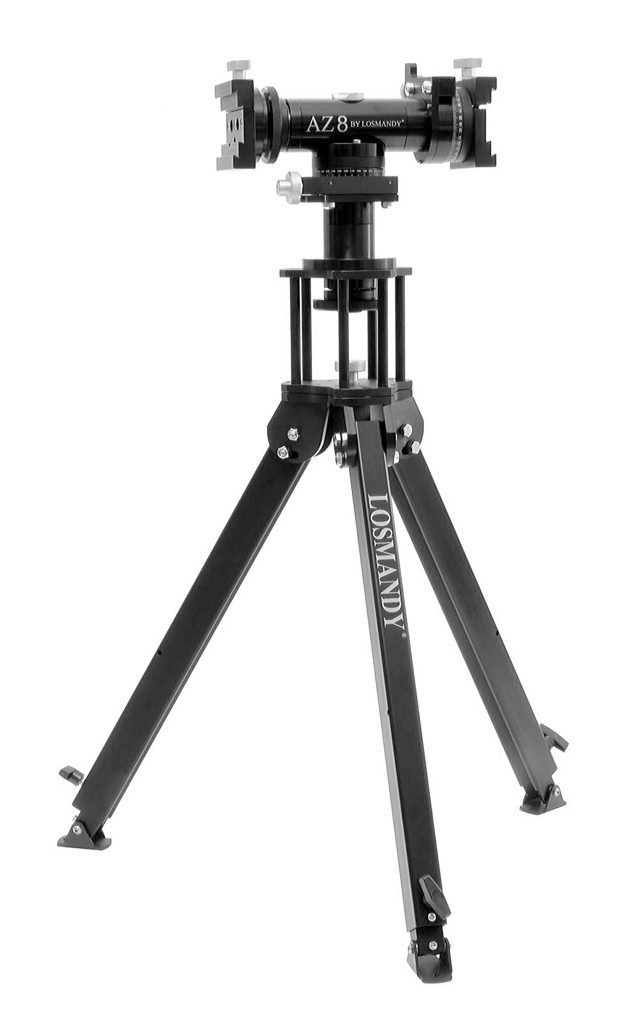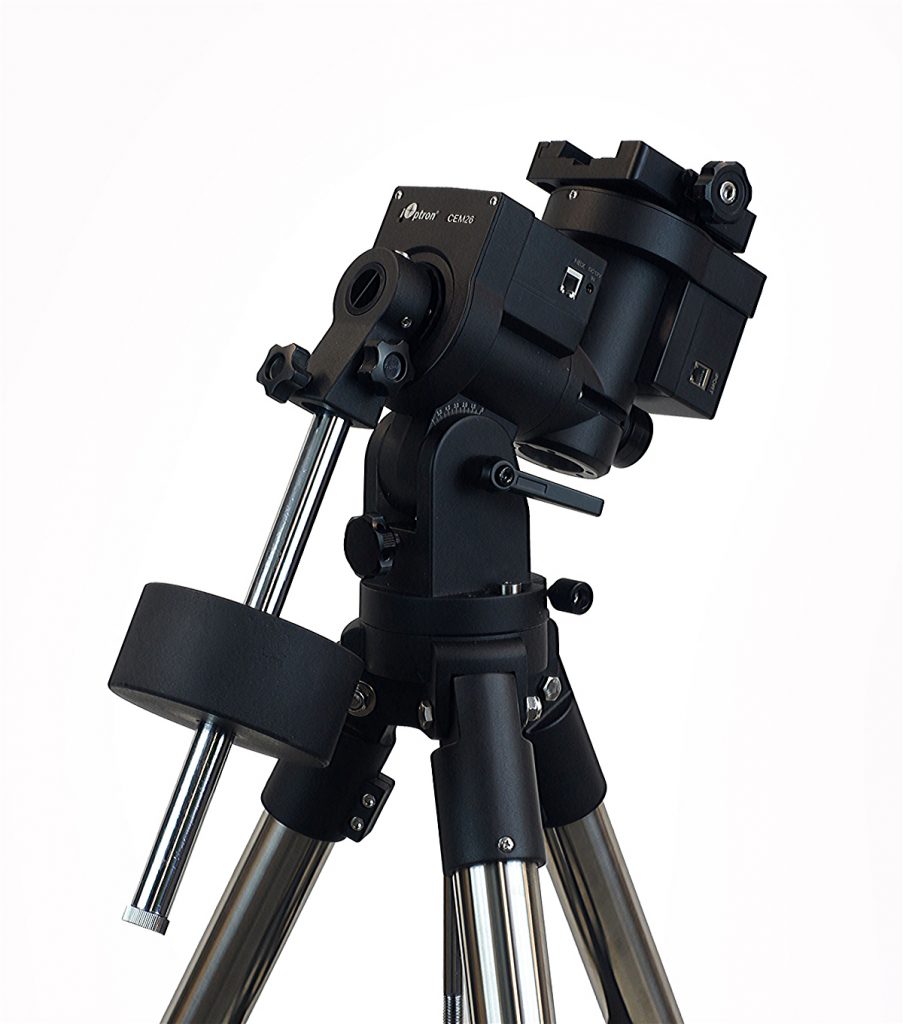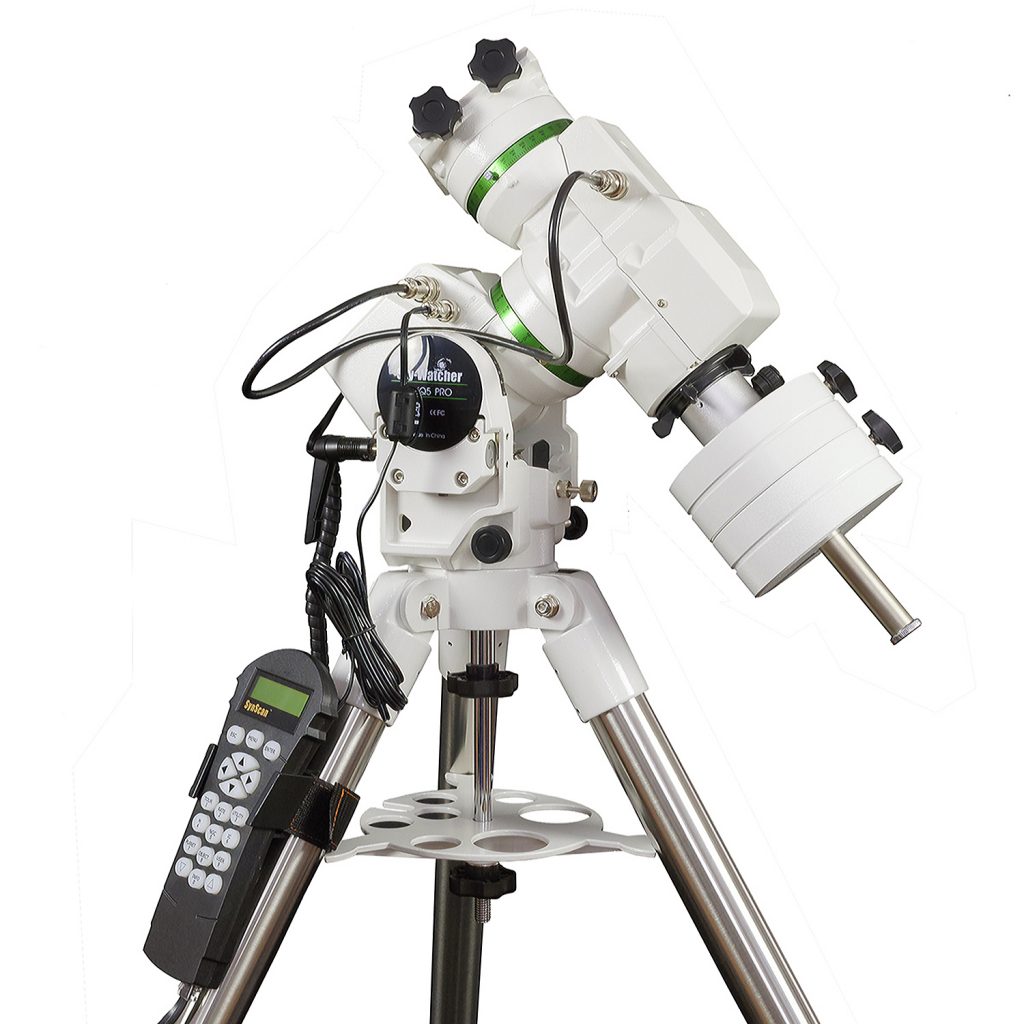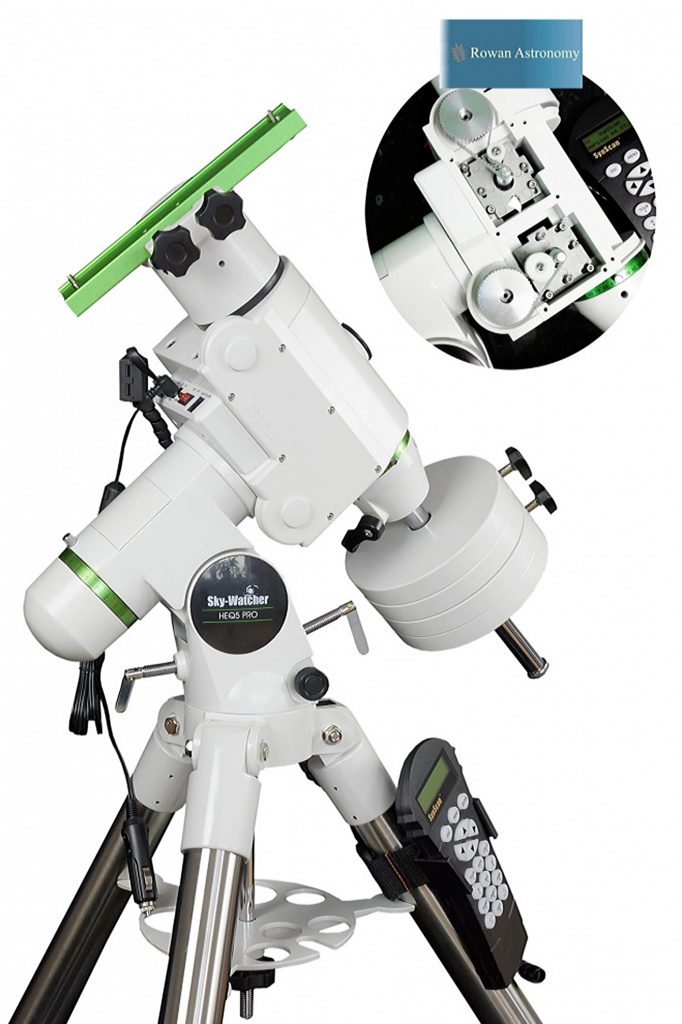[This is just one of many articles in the author’s Astronomy Digest.]
This article continues looks at some further, more expensive, mounts. This text also discusses how they can be upgraded or, having been used for some time, serviced to improve their performance.
The Losmandy AZ8 Alt Az mount
This impressive mount, costing £999, is constructed entirely of machined aluminium and stainless steel and can support two telescopes having weights of just under 16 kg, such as a 127 mm refractor and a ~200 to 230 mm Schmidt-Cassegrain – so providing complementary views and making an excellent mount for use at star-parties! [Note that counterweights would be needed, on the opposite side of the mount, if only a single telescope were to be mounted. This is in order to balance the mount so that the telescope can be accurately controlled.] The total weight of the mount, riser and tripod is approximately 12 kg with the riser included so that the azimuth variable slip clutch under the head can be adjusted. Large knurled knobs control the variable slip clutches for each motion so one can quickly move the telescopes to the desired object and then use the integrated slow motion controls to track the object across the sky using additional flex cables if desired.

The Australian company Astro Devices also provide a “Losmandy AZ8 Encoder Kit” for use with the AZ8 employing 311,296 step encoders giving a resolution of ~4 arc-seconds[NW1] . When used with a suitable controller such as the “Astro Devices Nexus DSC” this gives the mount a “Push To” capability that can be controlled with star chart software such as Cartes du Ciel. [Search for “Losmandy AZ8 Encoder Kit.”]
The iOptron CEM26
The new CEM26, at a cost of around £1,000 when it shortly becomes available in the UK, weighs only 4.5 kg but can support a payload of up to a 11 kg. Its innovative ‘centre-balanced’ design places the weight of the payload weight directly over the centre of the tripod providing great stability. As the optional polar scope (included in the CEM26B) is not blocked by the declination shaft it is accessible at all times. The Go2Nova® Hand Controller employs a large 4-line LCD screen and its database includes over 21,000 objects! It allows for permanent periodic error correction to provide accurate tracking so useful when astroimaging and has a built-in Wi-Fi capability.

Sky-Watcher provide two mounts
At a cost of £995, is the Sky-Watcher AZ-EQ5GT . This can be used in both alt-azimuth and equatorial modes. The former mode is essentially for visual observing and, in this mode, the mount can support two telescopes. The latter can be used for either visual or astroimaging without suffering from the problem of ‘frame rotation’. Frame rotation occurs if anything more than a single short exposure image is taken through a telescope that is not polar aligned, as an equatorial mount should be. Weighing 7.7kg (excluding the tripod) and mounted on a tripod with 1.75 inch (44 mm) diameter legs it can support two telescopes, each of up to 15 kg, on either side of the mount, in visual mode or a single telescope up to 15 kg in equatorial mode. Balancing the telescope with counterweights, on the other side of the equatorial mount to the telescope, helps ensure that the telescope tracks objects more accurately. The drive system incorporates a belt drive to give quieter slewing and smoother tracking than gear driven mounts and has a dual encoder system so that it can be moved manually without losing its positional information giving great flexibility during observing sessions. The polar scope is optional. It’s Synscan hand controller includes a 42,900+ object database. The mount allows for periodic error correction in equatorial mode and includes an autoguiding port so, coupled with the belt drive, would make a superb mount for astro-imaging.

Also in this price range, at a cost of £1,099 is the “HEQ5 Pro GOTO Mount with Rowan Belt Drive Modification” as discussed below.

The websites of reputable astronomical equipment suppliers provide far more information than I can supply here as they quote detailed specifications from the manufacturers. I suggest that you do your research by making comparisons on their websites. I have found the website of Rother Valley Optics particularly useful when learning about the wide variety of equatorial mounts that are available. First Light Optics, who advertise in this magazine, also have extensive information on their website. Rother Valley Optics also provide a DVD – “The RVO Beginner’s Guide to Equatorial Mounted Telescopes” – at a cost of £6.99. Information and reviews of telescope mounts, from manufacturers and users, can also be found on YouTube and the manufacturers’ websites.
Upgrades and servicing to mounts
Rather than at some future time upgrading to a “premium” mount costing sometimes well over £1,000, lower cost mounts can often be upgraded or “tuned” to improve their performance. One example is the Sky-Watcher HEQ5 Pro mount whose spur gears can be replaced with a “Rowan Belt Drive” system. This eliminates the noise produced by the gears when slewing and also improves the tracking performance. A kit for self-assembly can be bought for around £100 but companies will install it for you and, as mentioned above, one can even purchase an already equipped mount.
After a time, the performance of any mount will fall off partly due to the degrading of the grease used to lubricate the bearings. Skilled amateurs can dismantle their mounts, re-grease them, and check and adjust the gear alignments, but others will employ a firm such as “DarkFrame” who can provide a “StellarDrive’” upgrade to a mount that will, for example, ultrasonically clean and re-grease all components and replace the worm gear bearings with those made from low friction hybrid-ceramic material. Telescope mounts are precision pieces of manufacturing, but manufacturing tolerances can be improved with the fine-tuning that the “StellarDrive” upgrade also provides. The typical periodic tracking errors of a standard AZ-EQ5GT mount is 20-25 arc-seconds and, with fine-tuning, this is reduced to 4-6 arc-seconds – a great help when astroimaging. The cost of such an upgrade is not small but will bring the mount’s performance up to those costing far more.
In a YouTube video “Best Mounts for Astrophotography” DarkFrame is visited and there is a demonstration of the Rowan Belt Drive.
